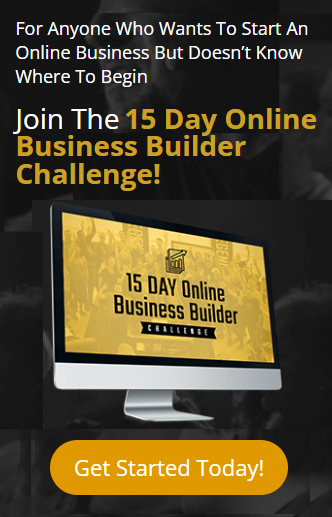With more than 1 billion searches conducted on Google Maps each month, having your business listed on the map can improve your search engine rankings and drive new business to your door.
However, there are some aspects of this marketing tactic that you may not know about if you aren’t familiar with the ins and outs of Google Maps ranking techniques.
Click here to learn how I was able to Quit My Job And Make Money From Home.
What is Local SEO?
Local SEO is all about getting your website ranked in Google, Yahoo, and Bing search engines for terms that are relevant to your business.
If you’re a lawyer and specialize in criminal law, then you want people who are searching for terms like criminal defense attorney los angeles to find your website.
Local SEO involves optimizing your site with local keywords (think neighborhood names and addresses) that will bring in more leads for businesses and help them increase their ROI.
When it comes to ranking on Google maps, there are also some practical steps you can take when it comes to making sure your company shows up where it should be.
Here are 8 ways to do just that:
1. Take Advantage of Your Own Website:
First things first – if someone wants to learn more about your business or services, they should be able to get information from your website directly…this way they can decide for themselves if you’re worth reaching out too!
Make sure you have a contact us page, fully optimized with local keywords and links to directions, hours of operation and other key pieces of info that potential customers might need in order to contact you.
2. Create an Engaging & Attractive Business Profile:
A lot of business listings show up by default as limited detail in Google Places. What does limited detail mean? It means your listing won’t show at all until you tell Google more information.
Now, while that may sound daunting at first glance, not completing your Google Places profile isn’t any better because then you will never show up in search results at all.
So here are a few ways to increase your chances of showing up higher than limited details: • Upload photos • Make sure to complete each field completely • Include relevant content such as Open Hours M-F 8am-5pm
3. Be Active & Responsive:
There’s no point in having a great business listing if nobody knows about it; after all, nobody visits places that don’t exist! So once you create your initial Google+ local business profile, make sure you check back often and respond to new reviews that appear quickly.
By doing so, potential customers are more likely to notice what others are saying about your service or product which increases your chances of getting even more reviews—and new clients—in turn.
4. Get Involved In Communities That Feature You:
There are numerous Google communities out there dedicated to specific types of businesses and industries.
The trick is finding those communities, filling out your profiles appropriately, and joining conversations that either already feature you or would like to feature you in future posts/discussions/topics.
Being active on these sites boosts your rankings quickly and helps connect prospective customers with other users looking for similar types of products/services as yourself—so it’s a win-win situation all around!
5. Keep All of Your Contact Info Current:
If you or your employees move or change email address, you must update your listing! If a customer searches for your business and cannot easily reach you via phone number, they’ll go somewhere else.
Also, ensure that all postal address information matches up as well! Search engines take inconsistency between a business’ online and offline marketing efforts as a sign of poor business practices.
6. Optimize with Keywords & Research Your Competitors:
Another cornerstone to local SEO is research. Once you’ve developed a plan of action to develop your local SEO, it’s important to know exactly how competitive your keywords are.
Google offers a competitive ad tool that will allow you to see how many other businesses in your area are trying to rank for keywords related to yours.
This tool is invaluable for planning and developing local SEO strategies and should be utilized on a regular basis.
7. Use Content Marketing to Educate Potential Customers:
On Google Places, there is a section for you to post original content that relates to your business. Local SEO experts suggest using these sections as a way to gain visibility and educate potential customers about what it is that you do.
Doing so will improve your chances of connecting with new customers who are searching for solutions to problems they’re currently facing!
8. Stay Up to Date with Google Algorithms:
Finally, there are a variety of factors that determine how highly you rank in search engine results pages. Unfortunately, most of these factors are outside of your control, but thankfully there is one that you can keep a close eye on: local algorithm updates.
Over time, Google has updated its algorithm to help filter out spammy businesses and push more high-quality ones up into search engine rankings.
Many of these changes have affected local businesses, so it’s important to stay up to date with Google’s rules and regulations in regards to search engine optimization.
If you do, you’ll be much more likely to receive positive reviews that show up in search results! Local SEO is a constantly changing and evolving industry.
Even if you implement all of these steps flawlessly from today forward, there’s still a chance that your business will drop down or disappear from search results for a period of time.
But that doesn’t mean you shouldn’t try to get there! So what are you waiting for?
How do I optimize my business page on Google Maps?
The major search engines usually rank websites that are locally-relevant. Optimizing your business page with local SEO best practices will allow you to rank highly in local searches.
Here’s a brief outline of what it takes: First, register your business with Google Business View, which allows users to create an accurate profile of your company’s location and physical offerings.
Next, ensure that you have a fully optimized Google+ business page set up and connected to its corresponding location on Google Maps.
Lastly, learn about Google’s local ranking factors by reading their SEO Starter Guide . Then, implement and follow through on some of these tips as needed.
Your work will pay off—locally—in no time! (For even more information on improving your online visibility, check out Moz’s Local Search Academy.)
These were recently removed from Bing for unknown reasons but you may still find them useful or want to try and make one.
What are local landing pages and why are they useful?
Local landing pages are webpages you make specifically for users who are searching for a local business. Creating a landing page helps convince these users that your business is genuine, and it also enables you to collect crucial information about their needs.
With all of that in mind, let’s get started! What local SEO practices should I be aware of?: There are plenty of factors that go into ranking on Google maps but there are plenty of easy practices that will help with rank as well.
Here are some tips: Keep detailed records of customer interactions; Track activity-based keywords such as parking near or directions to; Create content around common questions like hours of operation or photos inside; Use long-tail keyword phrases in your metadata;
Optimize product or service listings with information specific to local searches (for example, address, phone number); Keep current with trends by keeping an eye on what other competitors are doing across town.
Remember, your customers might not always search directly for you, so don’t stop marketing until they walk through your door. Hiring Local SEO Pros Can Help You Get Where You Want To Be:
If you have ever attempted to do any kind of website optimization yourself then chances are pretty good that you have either had no success at all or just hit temporary blips of success before slumping back down again.
What is an NAP?
Your NAP (name, address, phone number) is your business’s most important piece of information. It’s how search engines and other businesses will identify you in their listings.
What is an NAP?: Your NAP (name, address, phone number) is your business’s most important piece of information. It’s how search engines and other businesses will identify you in their listings.
To make sure everyone has access to up-to-date information about your company, register with each relevant directory, such as Yelp or Facebook.
And don’t limit yourself just to online directories; also be sure that any local listing sites like ChowNow provide accurate details about your contact info and location.
Every listing should point back to a single website that includes more information about your services—and update it regularly!
Why should I use Schema Markup?
Schema markup is code that you can use on your website in order to label different elements. These elements tell search engines what your content is about. In turn, search engines rank your content higher than pages without these elements.
You can take advantage of Schema markup by including it into your Meta Tags and Page Copy for each page. Here are some of our favorite Schema Markup terms to use when developing a website:
Place, Organization, Local Business, Phone Number and Email Address. For an extensive list of all types of Schema Markup, check out Moz’s official documentation here .
One easy way to get started using Schema is with Yoast SEO Premium. This plugin allows you to implement Google maps directly onto your WordPress website quickly and easily.
It also provides SEO analysis reports, a feature called Advanced Settings where you can configure meta data settings and much more!
Should I create a free or paid account with Google My Business?
In addition to posting a link from your website, in order for your business to show up in Google’s search results, you must verify and complete its business information.
For that, you need a free or paid account with Google My Business. Once your business has been verified, you’ll see it in search results within minutes!
Getting listed is easier than ever with our new verification process—simply enter some basic info about your business and we will do all of the legwork for you.
Customers can also find businesses like yours by searching directly on Google Maps when they are nearby, which means even more ways to get noticed and attract new customers.
The best part? If you already have a Google account, setting up an account for your business takes less than two minutes (and no ads!).
Of course, if you don’t want your business to be found online, then you can always unlist it.
While we strongly encourage taking advantage of everything Google offers, we understand that not everyone wants their address and phone number shared publicly.
How can I improve my location, address, phone number & website information in the local 3-pack of Google Search Results & Google Maps Listings?
To obtain a presence in Google’s local search results, you need your business information (name, address, phone number and website URL) to be discoverable.
If you don’t see your listing in search results or in Local Pack results, how do you take control of it? Be sure your location is showing up in all directories it appears within – such as online directories like Yelp and Yellow Pages, and local offline directories such as city guides.
Ask your customers for directions . Since Google places a high value on real people providing direction for local businesses, I believe that including reviews from your clients may help boost ranking.
All you have to do is ask and include hyperlinks to previous client reviews. Build citations with Google My Business & Bing Places: Yes, most of us know that having our name mentioned across the web does help to boost visibility but did you know that having your physical addresses across other sites helps too?
Having an abundance of citations with relevant listings will not only affect ranking potential but also provide us with a higher degree of trust towards your company name.
Next time you’re brainstorming creative ways to promote yourself through outreach/seo strategy, consider using these methods because they work!
How can I share my listings across multiple platforms like Facebook, Twitter, Yelp, etc.?
Businesses that have already published their listings on Google My Business can set up feeds in order to display their business details across social media sites, blogs, or other third-party sites.
All you need is a feed template and some code. If you don’t have your own website, see if a plugin is available for your third-party platform of choice.
And if all else fails, feel free to email us directly and we’ll get back to you as soon as possible! [email protected] and we’ll provide information about what types of feeds are available on various platforms.
What are the benefits of having my business name as part of my address vs. the actual address itself? (Mainly applies to brick-and-mortar businesses.)
It’s important to get your address listed correctly on your page, but businesses with common names like Pizza Hut or Subway will have a harder time ranking for their own names than others because there are so many other businesses out there that share those names.
The best way to rank for a location-based keyword is by including your actual address in addition to your business name. If you do choose to include your street address as well, make sure it’s consistent across all platforms—including social media and your website.
In most cases, you should use either one or the other; not both. However, if you operate multiple locations under one brand name, it may be appropriate to include multiple addresses.
This helps keep things organized when people visit your Locations page in search of nearby locations.
Where do you start if you don’t have any citations/citations with wrong addresses/or no citations at all and want to start ranking for your business name/brand online?
When it comes to ranking your local business in search engines and directories, you need more than just citations. For many businesses, a single citation can do wonders for your rankings.
However, some businesses need more citations and additional directory listings if they want more of a natural presence on search engines. A little research will go a long way when it comes to improving your organic rankings in local search results.
Here are some ways to improve your rankings:
* Use City-Specific Keywords – If you’re trying to rank well on Bing/Yahoo Local and get decent rankings in Google Places, then use city-specific keywords.
For example, let’s say that I am looking to rank for [Appliance Repair Phoenix] — would I mention Phoenix in my listing? Would I specifically say appliance repair Phoenix?
These kinds of questions really determine whether or not you have properly optimized your listing.
Click here to learn how I was able to Quit My Job And Make Money From Home.







